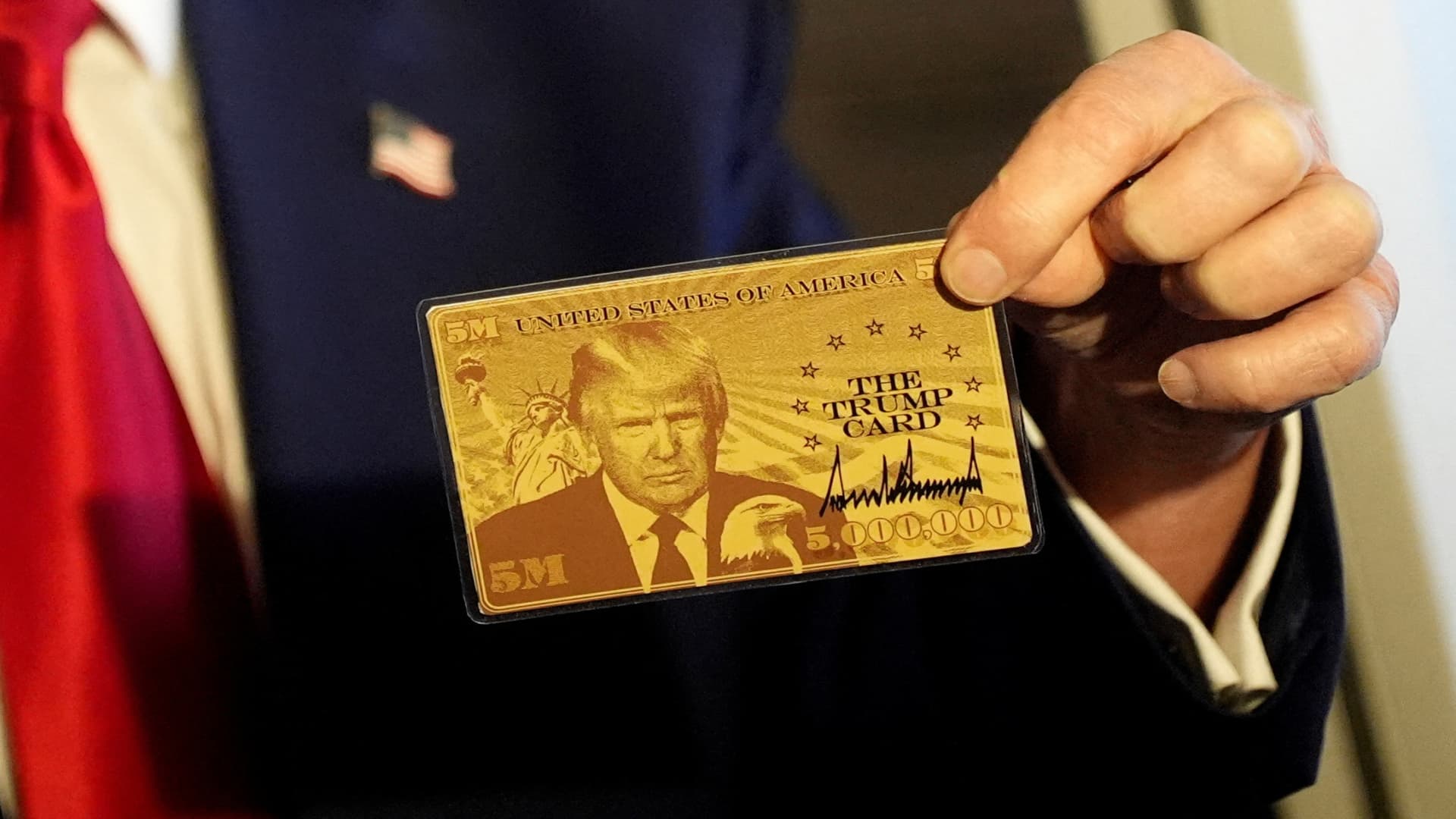The allure of the American Dream has long been a beacon for those seeking opportunity, security, and prestige. Donald Trump’s proposed $5 million “Gold Card” visa aims to capitalize on this dream, offering a fast track to U.S. permanent residency for the ultra-wealthy. With nearly 70,000 registrations reported by the Commerce Secretary within weeks of its launch, the program has sparked intense debate. While the idea of a high-stakes investment visa may seem like a golden opportunity for some, others question its legality, practicality, and ethical implications.
The Gold Card visa is positioned as a premium alternative to the existing EB-5 investment visa program. Unlike the EB-5, which requires a $800,000 investment and the creation of at least ten American jobs, the Gold Card eliminates these requirements. Instead, it offers a streamlined path to a green card and eventual citizenship for those willing to invest $5 million. The branding, complete with a golden prototype card featuring Trump’s face and a dedicated website, TrumpCard.gov, reinforces the exclusivity and prestige associated with the program.
The target audience for the Gold Card is clear: affluent individuals from countries like China, the Middle East, Russia, and India, where political instability, economic uncertainty, or social prestige drive demand for U.S. residency. However, the high price tag—$5 million—raises questions about its feasibility. While there are approximately 2.3 million people worldwide with net assets of $5 million or more, many are already settled in their preferred locations, and a significant portion reside in the U.S. already. Additionally, most investment-based migration programs globally require far less capital, making the Gold Card’s price point a significant barrier.
Legal hurdles pose another major challenge. U.S. immigration law grants Congress exclusive authority over the creation of new visa categories and permanent residency pathways. Trump’s claim that the Gold Card does not require Congressional approval has been met with skepticism by legal experts and policymakers. Any attempt to bypass Congress could result in legal challenges, with critics arguing that such a program would lack the necessary oversight and transparency. The EB-5 program, which the Gold Card is modeled after, has faced criticism for its lax oversight, potential for fraud, and benefits flowing disproportionately to well-connected real estate developers rather than job-creating ventures. The Gold Card’s exemption from job-creation requirements further complicates its legal standing.
Beyond legal concerns, the Gold Card’s market viability is uncertain. The U.S. is not the only country offering investment migration programs, and many alternatives come with lower price tags and fewer strings attached. Countries like Portugal, Malta, and Dubai provide residency or citizenship in exchange for significantly smaller investments, often with added benefits such as favorable tax systems. The political volatility surrounding U.S. immigration policies also raises concerns. Past programs, including the EB-5, have undergone frequent revisions, leaving applicants in limbo. Additionally, demand from key markets like China has waned due to capital controls and visa scandals, while India’s ultra-wealthy, though growing, represent a small fraction of the population.
The economic and social consequences of the Gold Card are also debated. While the program could generate significant revenue, critics question whether the benefits extend beyond the initial investment. Unlike the EB-5, which theoretically creates jobs and stimulates economic activity, the Gold Card offers no guarantees of economic benefit to American communities. The ethical implications of selling U.S. residency at such a high price are also contentious. Critics argue that the program undermines the fairness of the immigration system, where conventional immigrants and refugees often wait years for legal status. The social optics of offering residency to the ultra-wealthy while others struggle to navigate the system could fuel resentment and debate over wealth inequality.
Political and ethical concerns further complicate the Gold Card’s future. Trump’s administration frames the program as an economic boon, but its bypassing of Congressional authority raises questions about transparency, national security, and oversight. The EB-5 program’s history of vetting applicants’ sources of funds has been mixed, and the Gold Card’s lack of job-creation requirements could exacerbate these concerns. Internationally, the U.S. risks undermining broader efforts to address global wealth inequality by offering a high-priced residency program. Additionally, real estate lobbies and housing advocates may clash over the program’s potential impact on urban housing markets and social dynamics.
Despite the enthusiasm surrounding the Gold Card, significant uncertainties remain. The 70,000 registrations reported by the Commerce Secretary may not translate into actual applicants willing to invest $5 million. The program’s lack of clarity on processing, background checks, and the allocation of funds further complicates its viability. Legal challenges and regulatory hurdles could delay or derail the program entirely, leaving applicants in limbo. Countries with established investment migration programs have faced similar challenges, with sudden policy changes leaving buyers stranded.
In conclusion, Trump’s $5 million Gold Card visa is a bold but controversial proposal that taps into the enduring appeal of U.S. residency. While the program’s high price tag and exclusivity may attract a niche market, its legal, practical, and ethical challenges cannot be overlooked. The Gold Card’s future hinges on whether it can navigate the complex landscape of U.S. immigration law, market competition, and public perception. For now, those considering the program should approach it with caution, recognizing that what glitters may not always be gold.












